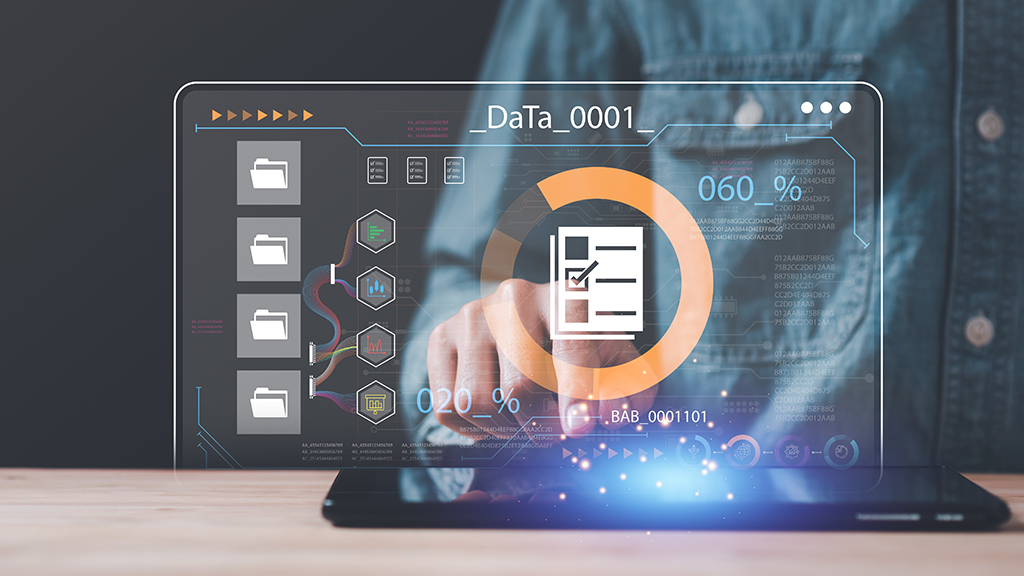
Global Content Lead - Tech & Consulting
Subscribe to the newsletter
Customer experience (CX) is no longer a minor player in the grand theater of commerce – it’s the star that takes center stage. In fact, 96% of buyers firmly believe that customer experience is the ultimate litmus test for brand loyalty. This sentiment is echoed by businesses themselves, with 89% competing primarily based on the battleground of customer experience.
However, the scope of customer experience has transcended its traditional boundaries. It’s no longer confined to the realm of the customer alone. It’s a catalyst that triggers a chain reaction, setting off waves of positive outcomes within organizations. Companies that prioritize customer satisfaction find themselves riding a wave of advantages, including a remarkable 1.5 times boost in employee satisfaction, a 1.6 times surge in brand awareness, and a substantial 1.9 times increase in order value. The equation is clear: satisfied customers equal a thriving business ecosystem.
In this hyper-connected era, customer experience (CX) has evolved from mere consideration to a pivotal differentiator that can propel a brand to stardom or relegate it to obscurity. As the significance of CX continues to grow, businesses are compelled to master it, and customer experience KPIs are instrumental in achieving this goal.
Nevertheless, KPIs alone cannot accomplish the task. Technology plays a critical role in redefining customer experiences by enabling personalized, efficient, and seamless interactions across various digital channels. Furthermore, it furnishes valuable data-driven insights that enhance customer satisfaction and ensure competitiveness.
If your business aims to enhance its customer experience and stand out from the crowd, continue reading as we delve into the key CX metrics to monitor and the pivotal role of technology in enhancing overall customer satisfaction
What are customer experience KPIs?
Customer Experience Key Performance Indicators (KPIs) are measurable metrics that organizations use to assess and quantify the quality of interactions and relationships between customers and their brands. These KPIs help organizations understand how effectively they meet customer needs, expectations, and satisfaction levels, ultimately impacting customer loyalty, retention, and overall business success. CX KPIs provide quantifiable insights into the health of customer relationships and the effectiveness of customer experience strategies.
CX KPIs bridge the gap between qualitative customer feedback and quantitative data, offering a holistic view of customer interactions. Ultimately, this empowers businesses to align their practices with customer preferences to foster stronger relationships, boost loyalty, and gain a competitive edge in the market.
Top 10 KPIs to measure customer experience
Customer experience KPIs let you track how fast you are losing your customers, how to retain them, their lifetime value, and their experience with your brand/business.
Here are the top 10 customer experience KPIs that you should consider measuring for your company:
1: Customer churn rate
The customer churn rate measures the percentage of customers who discontinue using a product or service over a specific time frame. The first step in figuring out how to keep a current customer and boost income streams is lowering churn rates.
A high churn rate signifies that a significant number of customers are ending their relationship with a brand, highlighting potential issues with customer satisfaction, value, or experience. On the other hand, a lower churn rate indicates that customers are happy with your level of service, which leads to a better customer experience and greater customer loyalty.
By closely monitoring this KPI, a business can gain insight into the effectiveness of its customer retention strategies, proactively address concerns, enhance customer experience, and thereby reduce customer attrition.
2: Net promoter score
The Net Promoter Score is a widely recognized CX KPI that evaluates customer loyalty and advocacy. It tells you about the quality of your overall customer experience based on the likelihood of your existing customers recommending your product, service, or brand/business to others.
Calculated by subtracting the percentage of Detractors from the percentage of Promoters, NPS provides a clear numerical representation of customer sentiment.
NPS = Total % of promoters – total % of detractors
A positive NPS score indicates strong customer loyalty and positive word-of-mouth referrals, while a negative score suggests areas for improvement in the overall customer experience.
3: Customer satisfaction
Customer satisfaction score (CSAT) gauges customers’ contentment with a brand’s products, services, or interactions. Typically measured through surveys or feedback mechanisms, customer satisfaction offers insights into the effectiveness of customer experience initiatives. A high customer satisfaction score indicates that the brand’s efforts align with customer expectations and needs, contributing to positive sentiments and lasting relationships. It says that your company has a customer-focused culture and that you consistently meet or exceed your customers’ expectations.
CSAT Score: Total number of satisfied responses (ratings of 4 or 5) / Total number of responses x 100
4: Average resolution time
This KPI measures how long it typically takes a customer care representative to address a problem for a client. This customer support statistic reflects your staff’s effectiveness and directly correlates to client satisfaction.
A shorter resolution time is indicative of efficient customer service and enhanced experience. This KPI helps businesses identify bottlenecks in their support processes, ensure timely assistance, and enhance customer satisfaction by addressing concerns promptly.
5: Customer acquisition rate
The Customer Acquisition Rate measures the rate at which new customers are acquired over a specific period. Tracking this metric enables businesses to understand the effectiveness of their marketing and sales strategies in attracting and converting potential customers. This rate can be expressed as the number of new customers gained in a given time frame, such as per month or quarter.
A higher acquisition rate indicates successful customer engagement and the appeal of the brand’s offerings.
6: Conversion rate
The conversion rate is a crucial CX KPI that evaluates the effectiveness of a brand’s website or landing pages in converting visitors into customers. Expressed as a percentage, the conversion rate highlights the success of calls-to-action, user experience, and overall engagement on digital platforms. Businesses can use this KPI to optimize user journeys and maximize conversions.
7: Cart abandonment rate
In ecommerce and retail, the cart abonnement rate holds significant importance. It measures the percentage of users who add items to their online shopping carts but do not complete the purchase. A high abandonment rate indicates potential friction points in the checkout process or gaps in the user experience. Monitoring and addressing this KPI can increase sales and improve user journeys.
Many of the causes of cart abandonment can be resolved by simply improving the user experience. For instance, if potential customers are leaving their carts empty because of unanswered queries, you might set up a chatbot or integrate messaging on your checkout page so they can easily contact support without leaving the experience. A well-designed user experience, possible return consumers, and greater revenue are all signs of lower cart abandonment rates.
8: Customer lifetime value
Also known as Customer LTV or Lifetime Customer Value, customer lifetime value (CLV) quantifies the total value a customer brings to a company over the entire relationship duration. CLV considers not just the initial purchase but also the ongoing value generated from repeat purchases, cross-selling, upselling, and referrals.
Customer lifetime value = Customer value* x Average customer lifespan
*Customer value= Average purchase value x average number of purchases
CLV helps businesses understand the long-term financial impact of acquiring and retaining customers. A higher CLV indicates that customers are generating more value over time, which could justify higher customer acquisition costs or investments in customer retention strategies. It also aids in making informed decisions about resource allocation, marketing strategies, and customer relationship management.
9: Direct traffic
Direct traffic measures the volume of visitors who reach a website directly by typing the URL into their browser or using bookmarks. High direct traffic is an indicator of brand awareness and customer loyalty, showing that customers are intentionally seeking out the brand’s online presence.
Direct traffic creates potential for future growth and goes hand in hand with brand awareness.
10: Pages per visit
Pages per visit quantifies the average number of pages a user views during a single session on a website. A higher pages-per-visit metric indicates deeper engagement and interest in the brand’s content, reflecting the effectiveness of the website’s layout, navigation, and user experience.
Should you measure all these KPIs?
While each of the mentioned customer experience KPIs provides valuable insights into different aspects of your business’s interactions with customers, it’s not necessary or practical to measure all of them simultaneously. The choice of KPIs to measure should be tailored to your specific business goals, industry, and the nature of your customer interactions.
Most companies only measure 2.5 customer experience KPIs. It really starts with understanding your business metrics and choosing the best KPIS for customer experience that makes sense to your business.
How to leverage technology for success
Technology is integral to modern CX strategies. It empowers businesses to deliver personalized, efficient, consistent experiences across multiple channels while providing valuable insights and predictive capabilities to optimize customer interactions. In today’s digital age, embracing and leveraging technology is paramount for staying competitive and meeting customer expectations, ultimately elevating your CX metrics.
Here are some of the leading technologies paving the way for an unparalleled CX (Customer Experience) journey.
- Personalization: Technology enables businesses to collect and analyze vast customer data, allowing for highly personalized interactions. This personalization can range from recommending products or content based on previous behaviors to addressing customers by name in communications. Personalized experiences lead to enhanced customer satisfaction and loyalty. The Customer-Driven Marketing Solution, powered by CDMP technology, does exactly this. It helps you execute hyper-personalized marketing campaigns and provide a tailored brand experience across channels to increase conversions for your business.
- Omni-channel engagement: Digitization has facilitated seamless interactions across touchpoints, such as websites, mobile apps, social media, chat, and more. Customers now expect consistent experiences as they move between these channels, and technology helps businesses deliver on this expectation.
- CRM systems: Customer Relationship Management systems such as Dynamics 365 Customer Engagement streamline the retrieval of customer information, ensuring a smooth experience when customers seek assistance from service representatives. These systems play a crucial role in minimizing interruptions by maintaining easy access to relevant customer data, all efficiently organized. Similarly, Holistico – D365 Customer Service Solution represents a comprehensive customer service solution designed to digitally expedite customer support and inquiry resolution for retailers. The primary goal of this solution is to fully enhance call center operations and empower agents with a unified customer view.
- Chatbots and virtual assistants: AI-enabled chatbots and virtual assistants provide immediate responses to customer inquiries, offering 24/7 support. They can handle routine tasks, freeing up human agents to focus on more complex issues. This leads to faster response times and greater customer satisfaction.
- Data and AI: Advanced data and AI tools allow organizations to gain deeper insights into customer preferences and behavior. This information can be used to identify trends, pain areas, and opportunities for improvement, ultimately leading to better-informed business decisions.
- Customer feedback and surveys: Technology simplifies the process of collecting and analyzing customer feedback through online surveys, social media monitoring, and review platforms. Real-time feedback helps businesses identify areas that require attention and make immediate improvements.
- Predictive analytics: Predictive analytics leverage historical data and ML algorithms to predict customer needs and behaviors. By proactively addressing issues or offering relevant products or services, businesses can enhance the customer experience.
- E-commerce enhancements: Technology innovations in e-commerce, such as augmented reality (AR) for product visualization and one-click purchasing, provide a more engaging and efficient online shopping experience, propelling a boost in conversion rates and customer satisfaction.
- Cybersecurity: In the digital age, customers are concerned about the security of their financial and personal information. Technology plays a critical role in implementing robust cybersecurity measures to protect customer data building trust and confidence.
- Data integration: Technology allows businesses to integrate data from various sources, including CRM systems, social media platforms, and customer support software. This integrated data provides a comprehensive view of the customer, enabling more informed decision-making and more effective customer service.
- AI-Enhanced Customer Support: AI-driven solutions like natural language processing (NLP) and sentiment analysis help improve customer support by understanding and addressing customer inquiries and concerns more effectively.
Confiz and your CX journey: A winning partnership
Looking to enhance your customer experience? Our cutting-edge solutions, such as Holistico – a comprehensive 360-degree customer service solution, and Dynamics 365 CRM provide an integrated platform to expedite customer support, optimize call center operations, and equip your agents with a unified customer perspective, ultimately taking your customer experience to new heights. These solutions are designed to boost your CX metrics. Furthermore, our Data and AI services can revolutionize your CX landscape.
At Confiz, we specialize in tailoring solutions aimed at elevating your customer experience. Our solution is crafted to improve your CSAT score, reduce churn rate, and nurture enduring customer relationships.
Let us collaborate with you to drive tangible enhancements in your customer experience journey. Reach out to us at marketing@confiz.com and embark on the path to exceptional customer satisfaction.



